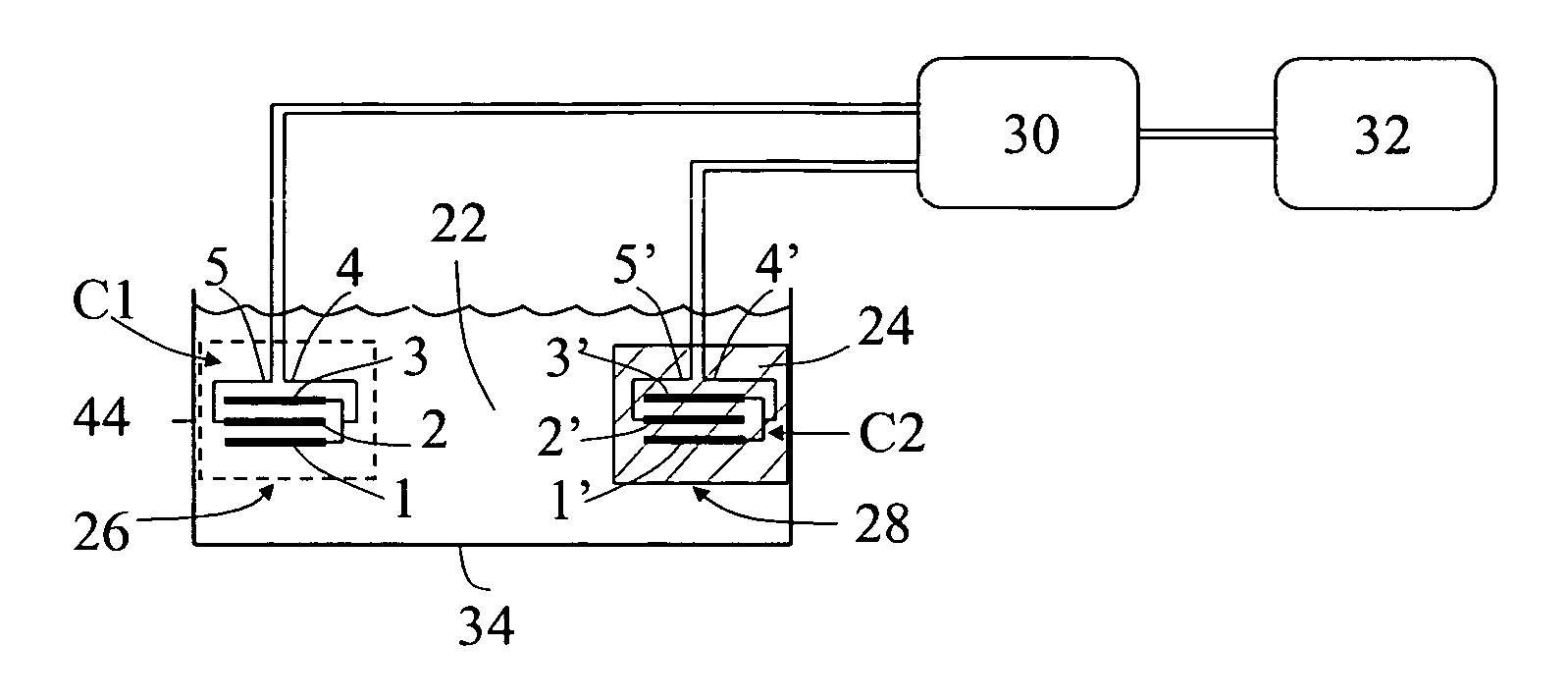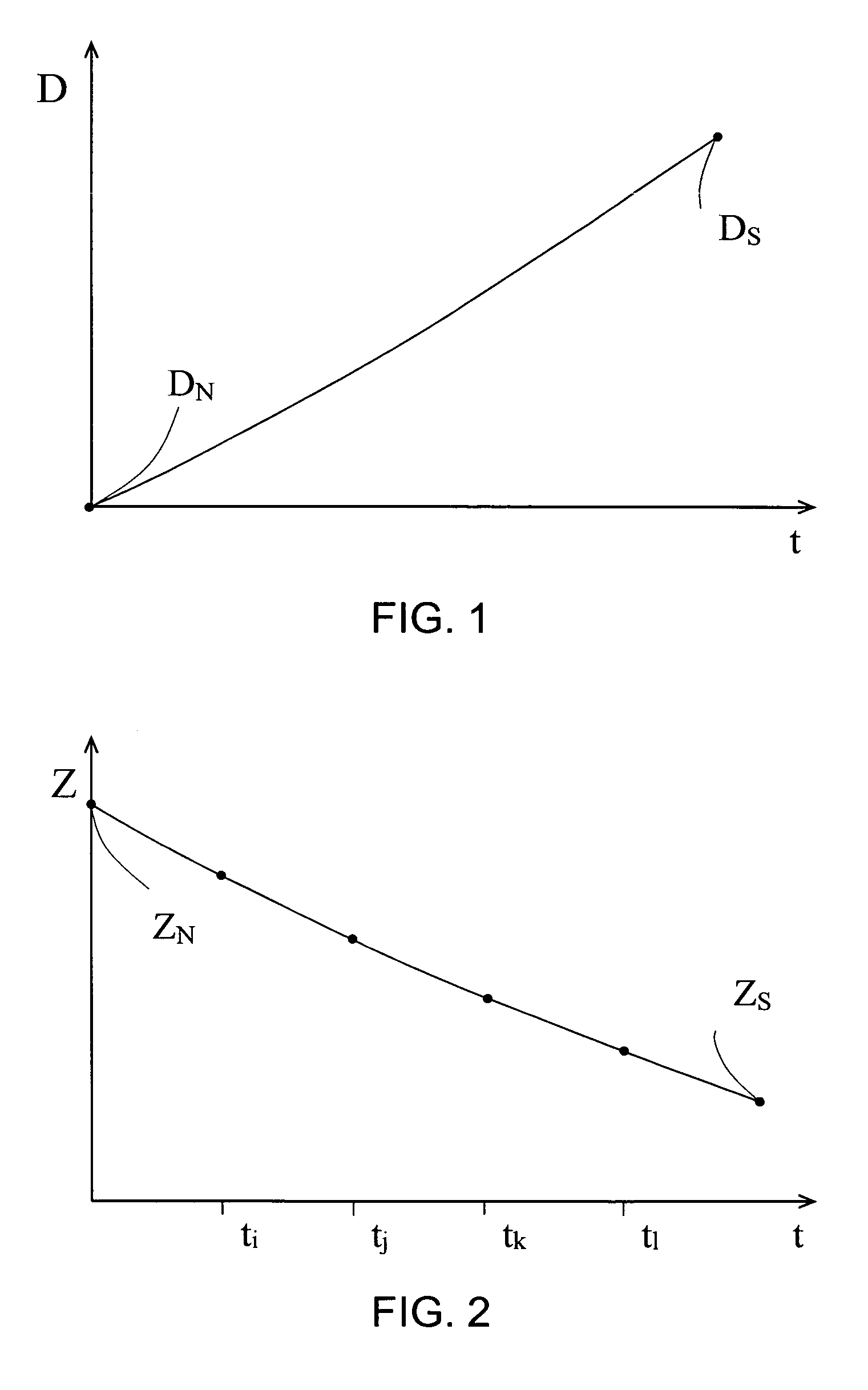Sensor and method for detecting oil deterioration and oil level
a sensor and oil level technology, applied in the oil field, can solve the problems of trouble codes, affecting the capacitance of the sensor, unsatisfactory effect of the sensor output signal, etc., and achieve the effect of reducing size and reducing siz
- Summary
- Abstract
- Description
- Claims
- Application Information
AI Technical Summary
Benefits of technology
Problems solved by technology
Method used
Image
Examples
examples
[0256]The following are examples and experimental information of the present invention, regarding the capacitive sensor having the integrated plated electrodes operated by an AC voltage of a single frequency to test samples of lubricating oil, which are offered by way of illustration only and not by way of limitation and restriction.
[0257]A sensing capacitive sensor was constructed with three identical plates of a copper alloy serving as the respective electrodes. Each metal plate had a thickness of approximately 1 mm and the shape of a table tennis bat, including a bottom rectangular section connected to a top longitudinal bar having a top end serving as the top end of the plate, wherein the bar is aligned with a longitudinal central line of the rectangular section. Obviously the rectangular section provided effective surface areas of the sensor, and the bar served as an electrical connecting means and mechanical supporting means to connect and support the bottom section. Therefore...
PUM
| Property | Measurement | Unit |
|---|---|---|
| frequency | aaaaa | aaaaa |
| alternating current analyzing device | aaaaa | aaaaa |
| thickness | aaaaa | aaaaa |
Abstract
Description
Claims
Application Information
 Login to View More
Login to View More - R&D
- Intellectual Property
- Life Sciences
- Materials
- Tech Scout
- Unparalleled Data Quality
- Higher Quality Content
- 60% Fewer Hallucinations
Browse by: Latest US Patents, China's latest patents, Technical Efficacy Thesaurus, Application Domain, Technology Topic, Popular Technical Reports.
© 2025 PatSnap. All rights reserved.Legal|Privacy policy|Modern Slavery Act Transparency Statement|Sitemap|About US| Contact US: help@patsnap.com



